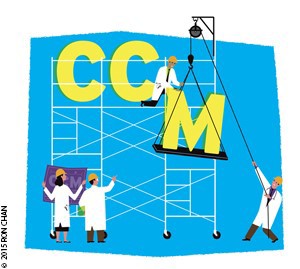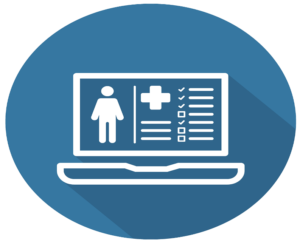What Does Case Management Bring to the Patient Experience?

In recent times, changes within the healthcare industry have occurred with more regularity and with a more wide-ranging impact. New IoT technology and breakthrough research have revolutionized care delivery and positively affected patients’ lives. One of the most significant changes in recent years has been the transition from a fee for service model to a value based one. Today, the healthcare marketplace is much more competitive. There is increasing pressure on providers to meet metrics that lead to positive patient outcomes. Despite the rapid changes of modern times, the role of the case manager remains crucial to patient experience… and here is why…
Every day, case managers are required to make key decisions that impact the experience of their patients. Essential to their role is building strong relationships with multi-disciplinary medical teams. The case manager also acts as the custodian at every juncture of patient care. Case Management is commonly seen as a structure and process model. This is because the case manager connects both of these to outcomes of care. The role of the case manager is key to improving the quality and safety of care, while reducing unnecessary cost; all while optimizing their patients’ experience. (https://www.ahcmedia.com/articles/140655-quality-of-care-and-the-role-of-the-case-manager)
Another important focus of those working in case management is to ensure an effective transition of care. This can be defined as moving the “patient from one care setting to another”. If done ineffectively, this can be costly to the facility.

One of the most important decisions that case managers contribute to is deciding at what point a patient should be discharged. This decision needs to be carefully weighed, especially when patients require additional care at home. In this instance, the experience of home care nurses are key for a successful transition of care.
Danielle Pierotti says that a professional home nurse is a necessity for those patients who need home-based care. According to Pierotti, non-professional caregivers tend to do a lot more tugging and pulling than professional home nurses. Unsurprisingly “there are false starts, angry words and injuries to both parties…pulling shirts and just full-on deadlifts occur daily.” This results in shared anxiety and fear and “makes a risky situation more dangerous”.
For any case manager, the development of a robust care management plan is an important part of providing an optimal patient experience. In today’s healthcare environment, there is an emphasis on personalizing the patient experience. It is no surprise then that standardized plans are likely to be viewed by many case managers as commonly ignoring patient’s multi-faceted needs. In fact, standardization of care plans may be challenging to implement when dealing with patients “…With a variety of comorbidities across medical and behavioral health”. (https://www.cmsatoday.com/2017/10/04/care-transitions-remember-the-basics/)
The question then is…
“Can standardization of care plans be effective?”

According to Frater, the benefits for patients are two-fold. Firstly, that care plans provide a shared starting point for all patients- all patients will be passed through the same standardized assessment. Second, that patients’ progress will be measured … “against their own goals and against standardized benchmarks”. Under this standardized care plan template, the care manager is required to incorporate individual patients’ needs and limitations. For instance, a standardized benchmark for diabetes patients “might be to attain an HbA1c less than 7%”.
Frater says, that short term personalized goals for both the care provider and the patient need to be part of this standardized care plan. The clinician should initially develop short term goals before meeting the final goal. For example, a short-term goal of 9 % should be met before diabetes patients achieve the final 7%. Personalized goals for the patient could be to “avoid dialysis” or “avoid amputation”. Any progression made in attaining both clinician and patient targets are recorded by the clinician. Frater says, that individualized patient goals increase their level of engagement in the healing process.
How optimization of EHR equates to improving the efficiency of Care Coordination
Another major challenge for case managers is seamlessly coordinating care. Indeed, care coordination is seen as a critical tool in increasing care “effectiveness, safety and efficiency” of the national health system. However, the current healthcare climate, still needs to overcome obstacles in care management and transitions that produce medical miscalculations, wastage of resources and harm to patients. Evidence provided by the joint commission states “80 percent of errors…” are rooted in “miscommunication, fragmentation of care” (The Joint Commission, 2012 cited in Optimizing Electronic Health Record Technology to Maximize the Value and Efficiency of Care Coordination by Carlo C. Carado).

According to Carlo Carado, the Director of Care Management and Social Work at Cedars-Sinai Medical Network, the physician network of Cedars- Sinai Health System, the challenges faced were caused by a lack of available real-time information shared among care teams. This resulted in gaps in care. Carado also says that Sinai relied greatly on “manual data capture, manual hand-off communication during care transitions”, as well as, “fragmented systems used for clinical documentation” that meant clinical documentation “resulted in duplicative, time-consuming work”. (https://www.cmsatoday.com/2017/08/24/optimizing-electronic-health-record-technology-to-maximize-the-value-and-efficiency-of-care-coordination/)
To solve this a team of information technology specialists and members of the care management team joined forces. The intent was to create the vision for this project as well as setting out challenges, existing needs, and practical solutions. The progressive steps included “the discovery and identification of requirements, scope definition, work flow design, and build testing training, and the go live”. The above stages of the project were all displayed on a timeline that all team members and project leaders followed.
Through their efforts, Sinai built a more robust technical infrastructure. The changes had a positive impact on the case management team’s ability to coordinate care. Sinai’s investment in technology meant increased efficiency, care appropriateness, and higher patient satisfaction. Customizing technology also led to the creation of case management workflows and “electronic safeguards to ensure adherence to these workflows, as well as, providing measurable standards to validate efficiency in care coordination.” After these changes, Sinai had the capability to ensure case management resources meet patients’ needs. This was based and built around “risk stratification” and a reliable electronic referral practice.
Case Managers continue to play a vital role in patient care. When care is coordinated effectively it can be cost effective and optimize patient experience. Another way is of engaging patients is by employing efficient care management plans. These plans include giving patients an incentive to set personal goals along with those goals set by the healthcare practitioner. The care management plans proposed by Jeff Frater are both standardized, making them easy to follow, and are flexible enough to include individualized patient needs. These care management plans seem to have promise, but need further validation. In today’s climate there is increased pressure on hospitals to meet performance metrics. Using modern technology aids the efficiency and communication within hospitals, thus enabling them to meet performance criteria. However, as the scenario of Cedar-Sinai Health system proves, technology needs to be customized. This is necessary for maximizing case management resources and meeting the needs of a complex patient population.
